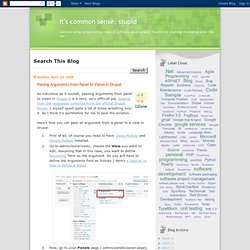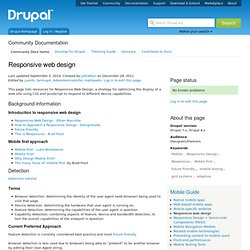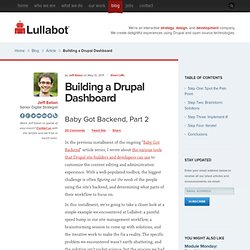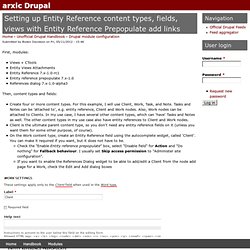

Thematic Mapping and Drupal. Passing Arguments from Panel to Views in Drupal. As ridiculous as it sounds, passing arguments from panel to views in Drupal 6 is a very, very difficult job, judging from the responses collected from the official Drupal Forum.

I myself spent quite a lot of times wrestling over it. So I think it's worthwhile for me to post the solution. Here's how you can pass an argument from a panel to a view in Drupal. First of all, of course you need to have Views Module and Panels Module installed. Go to admin/build/views, choose the View you want to edit. Note that you must set the Taxonomy Term to No Context, or else the view won't work.
Responsive web design. Last updated September 5, 2014.

Created by JohnAlbin on December 29, 2011.Edited by juanfe, tanmayk, AdamHermsdorfer, mehrpadin. Log in to edit this page. This page lists resources for Responsive Web Design, a strategy for optimizing the display of a web site using CSS and JavaScript to respond to different device capabilities. Background information Introduction to responsive web design Mobile first approach Detection Detection tutorial Terms Browser detection: determining the identity of the user agent (web browser) being used to visit that page.Device detection: determining the hardware that user agent is running on.Feature detection: determining the capabilities of the user agent in question Capability detection: combining aspects of feature, device and bandwidth detection, to test the overall capabilities of the viewport in question.
Current Preferred Approach Feature detection is currently considered best practice and most Future Friendly Solutions Testing Tools for desktop, laptop & mobile. Apprenez Drupal en vidéo et en français avec DrupalFacile. A command line shell and scripting interface for Drupal. Building a Drupal Dashboard. In the previous installment of the ongoing "Baby Got Backend" article series, I wrote about the various tools that Drupal site builders and developers can use to customize the content editing and administration experience.

With a well-populated toolbox, the biggest challenge is often figuring out the needs of the people using the site's backend, and determining what parts of their workflow to focus on. In this installment, we're going to take a closer look at a simple example we encountered at Lullabot: a painful speed bump in our site management workflow, a brainstorming session to come up with solutions, and the iterative work to make the fix a reality. The specific problem we encountered wasn't earth-shattering, and the solution isn't rocket science, but the process we had to work through is universal. Step One: Spot the Pain Point Over lunch, we asked everyone who'd worked on one of those stalled articles what (other than time!) No editor. Whew. Step Two: Brainstorm Solutions. Learning library. Drupal 7 Entity Reference Module.
Welcome to another Daily Dose of Drupal, Drupal goers!

And today we’re going to talk about the Drupal Entity Reference module. This is episode number 7 and this is brought to you by codekarate.com and we’ll get right into it today. The Entity Reference module; you may be familiar with Node Reference or User Reference if you have used Drupal 6 and CCK in the past and this is fairly similar but what is going to allow us to do is reference different entities within our other entities of course. So if we’re creating a new Node, we can reference other Nodes or perhaps the user or a group before using organic groups and we’ll go ahead and get started by downloading the Entity Reference module.
So am in the Drupal 7 website right now; test.codekarate.com, I’m going to download the Entity Reference module and you can see it contains two modules; Entity Reference Behavior Example and Entity Reference. You know what we’ll just do an Auto Complete just to show the different options. Drupal 7 Entity reference tutorial. Entity reference is a Drupal 7 module that provides a field through which another entity can be referenced.

Usually one node of a certain type makes a reference to a node of another type through an Entity reference field. For example the node "iPhone 4" of the type "Product" makes a reference to the node "Apple" of the type "Company" through the Entity reference field "Company name". Installation The Entity reference module depends on the Entity API (Other package) and CTools (Chaos tool suite package) modules, so make sure you have them installed and enabled. As with any other module use drush script to download and enable the Entity reference module, or download the module manually, unpack it under /sites/all/modules and enable through the interface at Modules /admin/modules.
Setting up Entity Reference content types, fields, views with Entity Reference Prepopulate add links. First, modules: Views + CToolsEntity Views AttachmentsEntity Reference 7.x-1.0-rc1Entity reference prepopulate 7.x-1.0References dialog 7.x-1.0-alpha3 Then, content types and fields: Create four or more content types.

For this example, I will use Client, Work, Task, and Note. Je découvre Drupal, et il y a des tutos que j'aurais aimé découvrir avant...